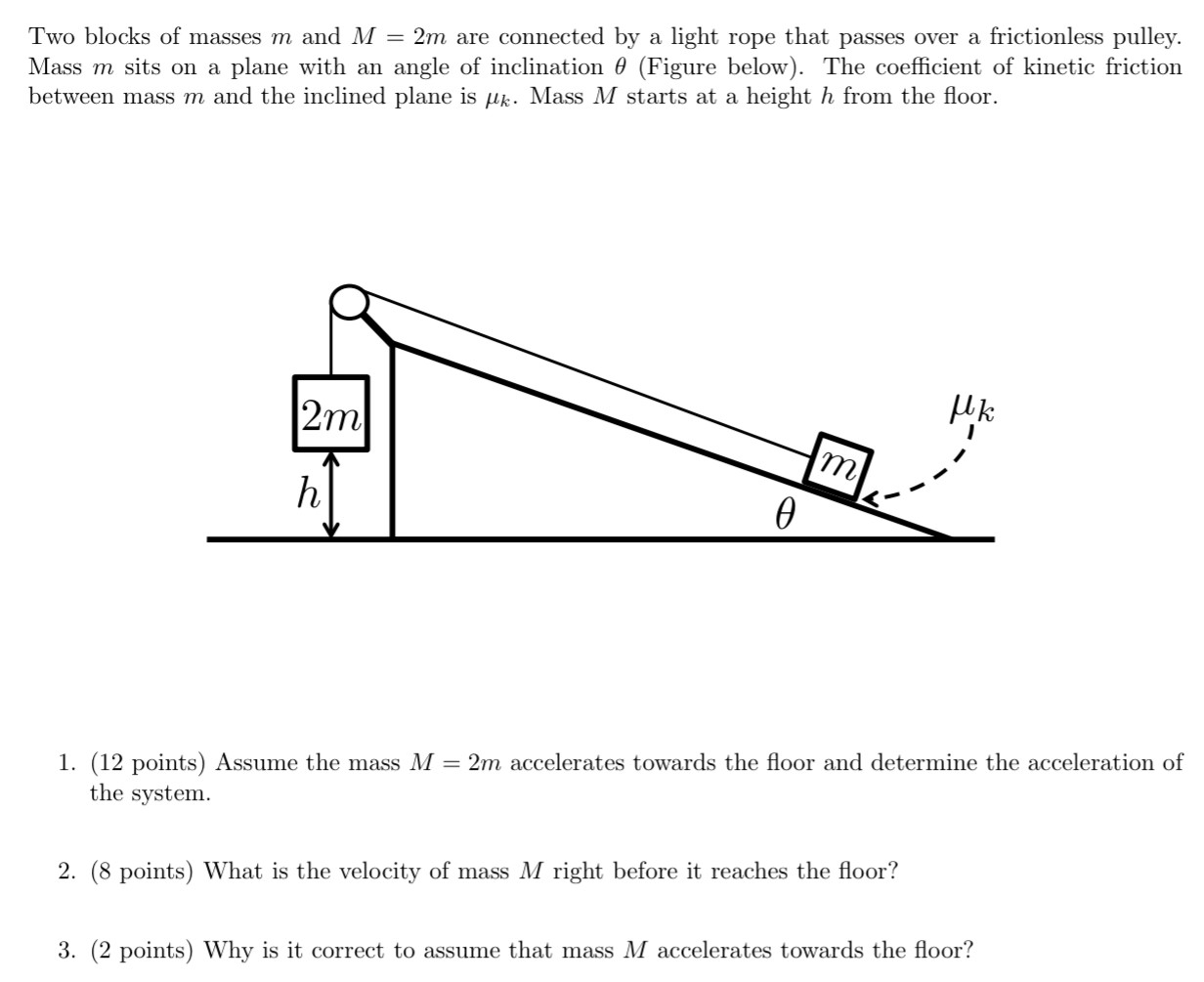Two blocks of masses m and M = 2m are connected by a light rope that passes over a frictionless pulley. Mass m sits on a plane with an angle of inclination θ (Figure below). The coefficient of kinetic friction between mass m and the inclined plane is μk. Mass M starts at a height h from the floor. (12 points) Assume the mass M = 2m accelerates towards the floor and determine the acceleration of the system. (8 points) What is the velocity of mass M right before it reaches the floor? (2 points) Why is it correct to assume that mass M accelerates towards the floor?
